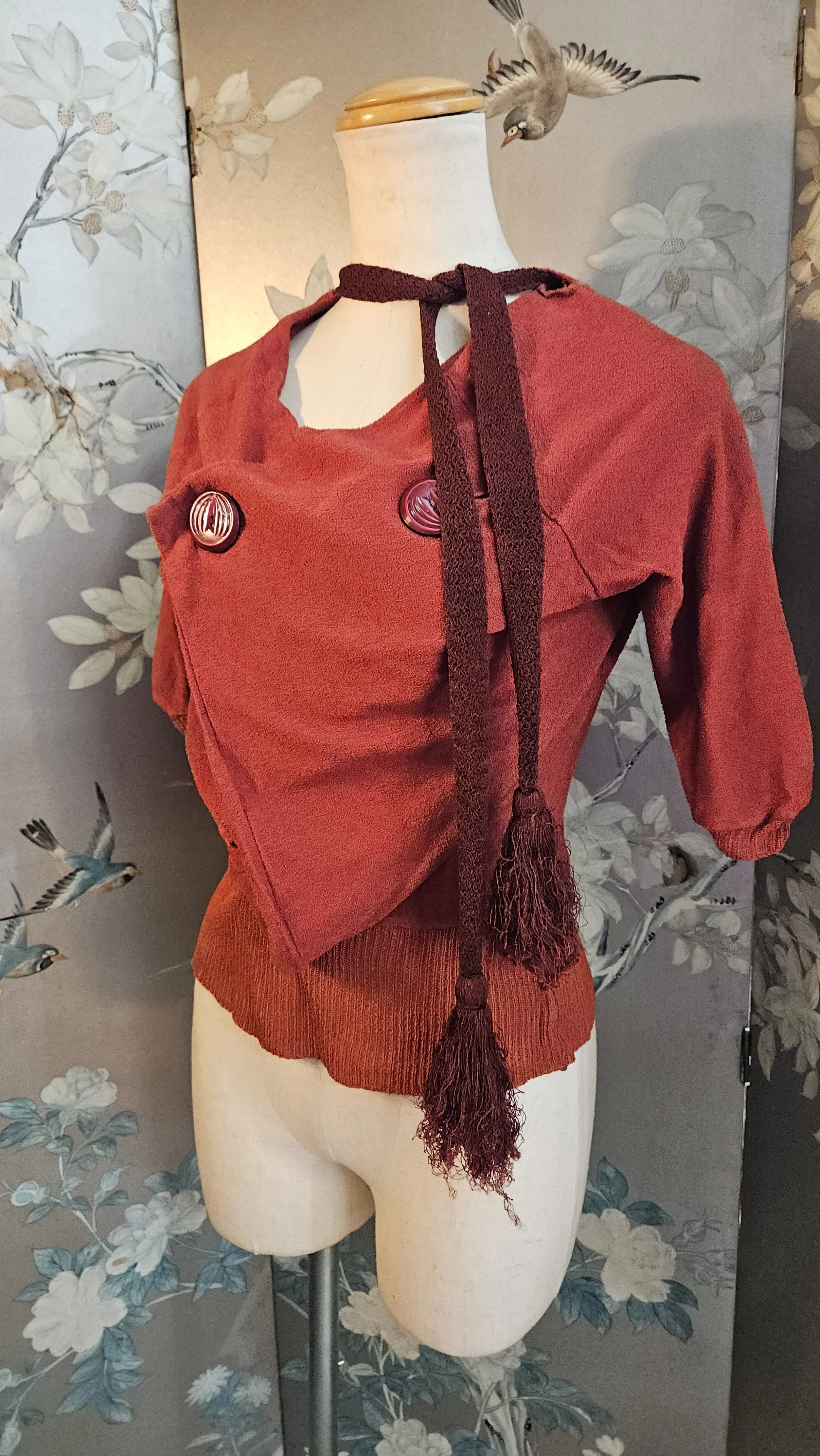 Image 1 of 7
Image 1 of 7

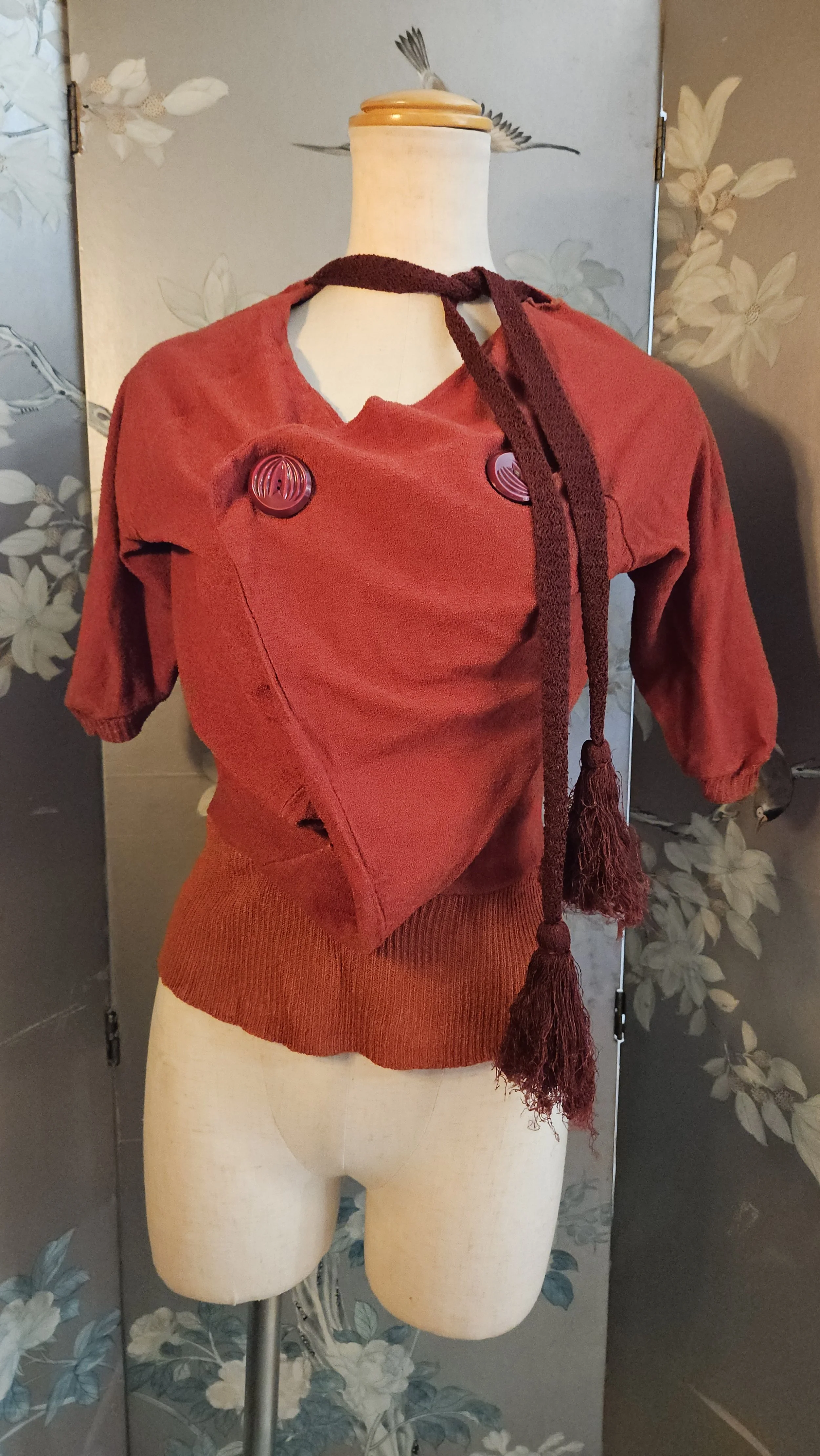 Image 2 of 7
Image 2 of 7

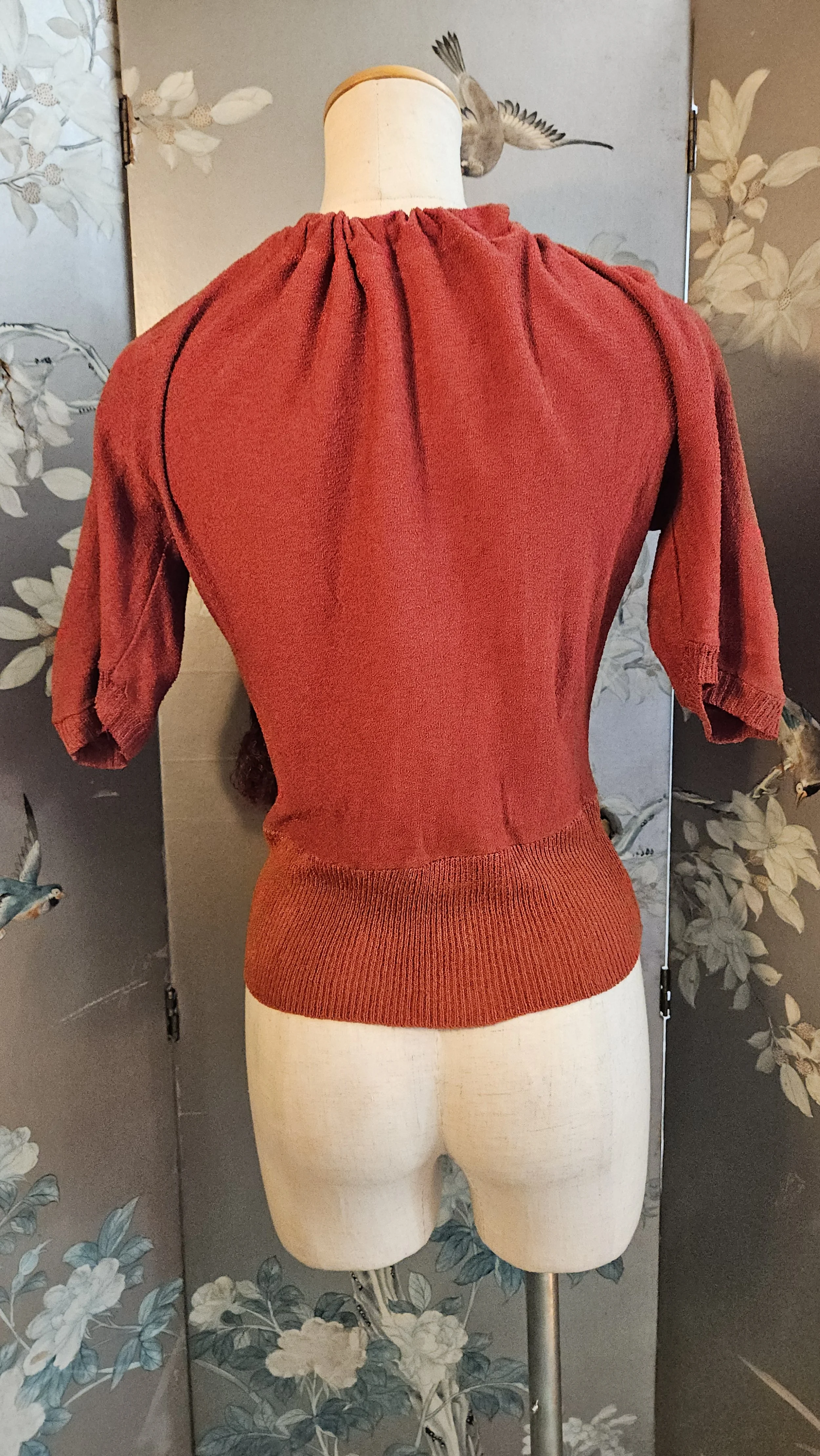 Image 3 of 7
Image 3 of 7

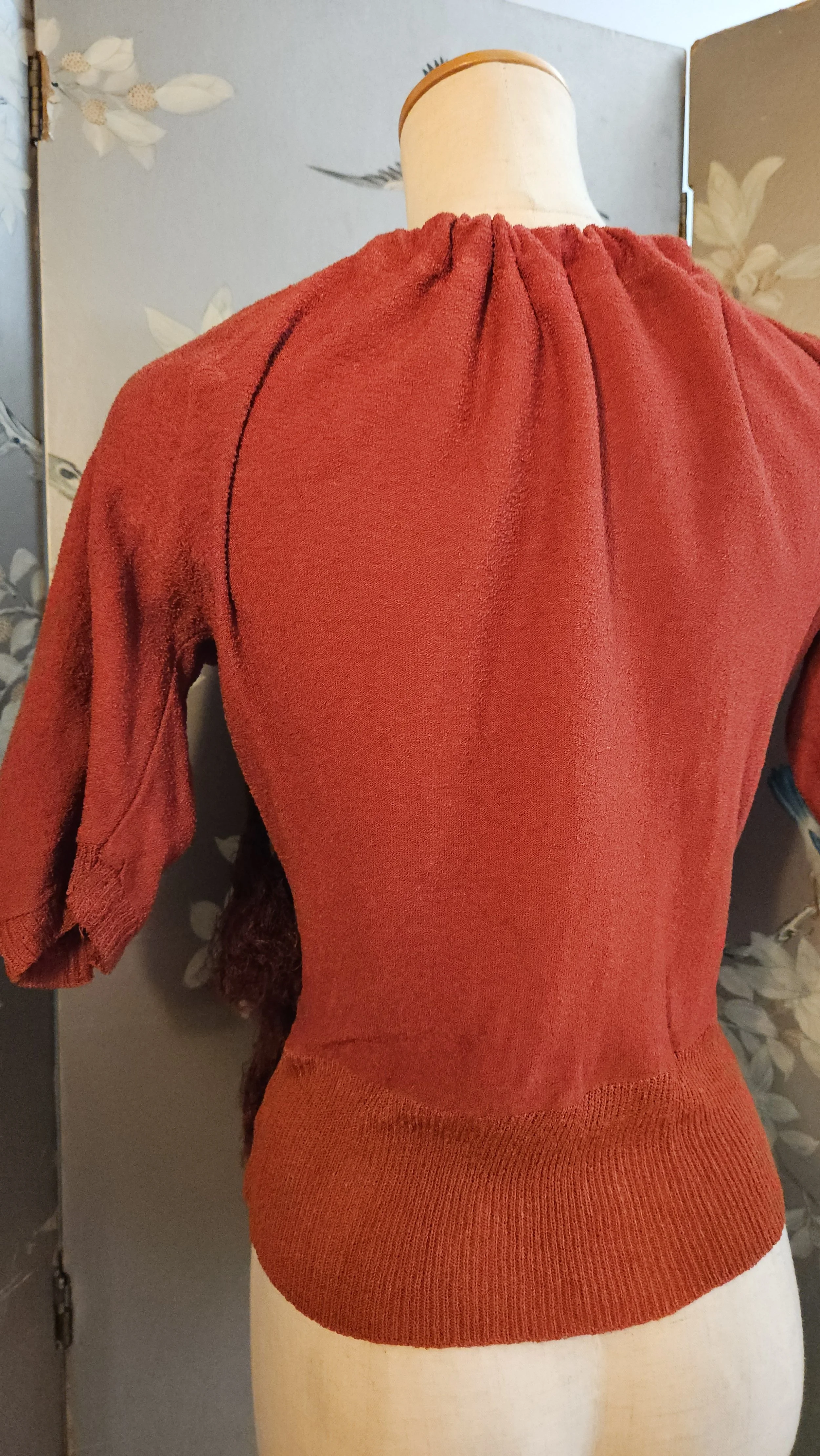 Image 4 of 7
Image 4 of 7

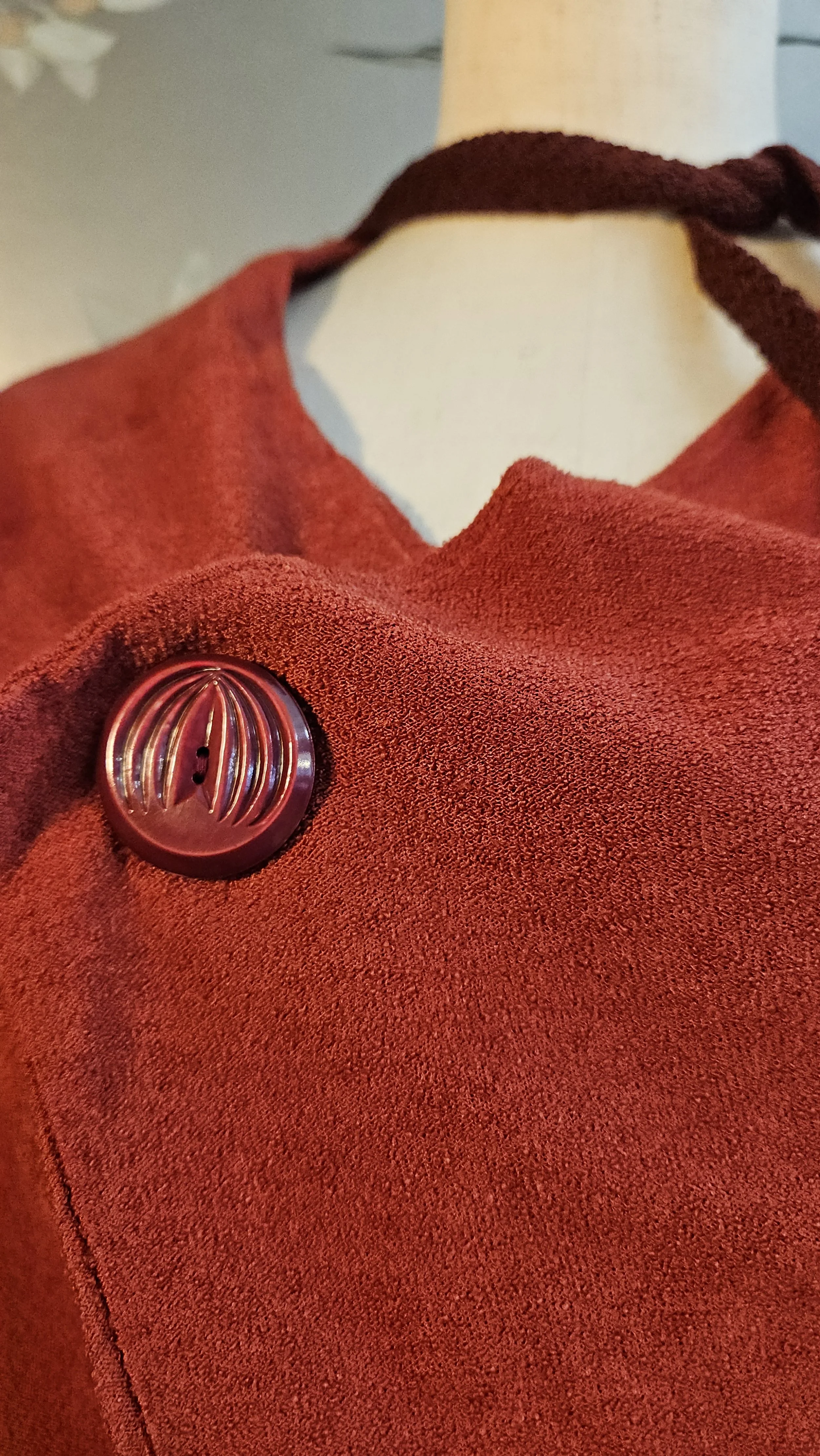 Image 5 of 7
Image 5 of 7

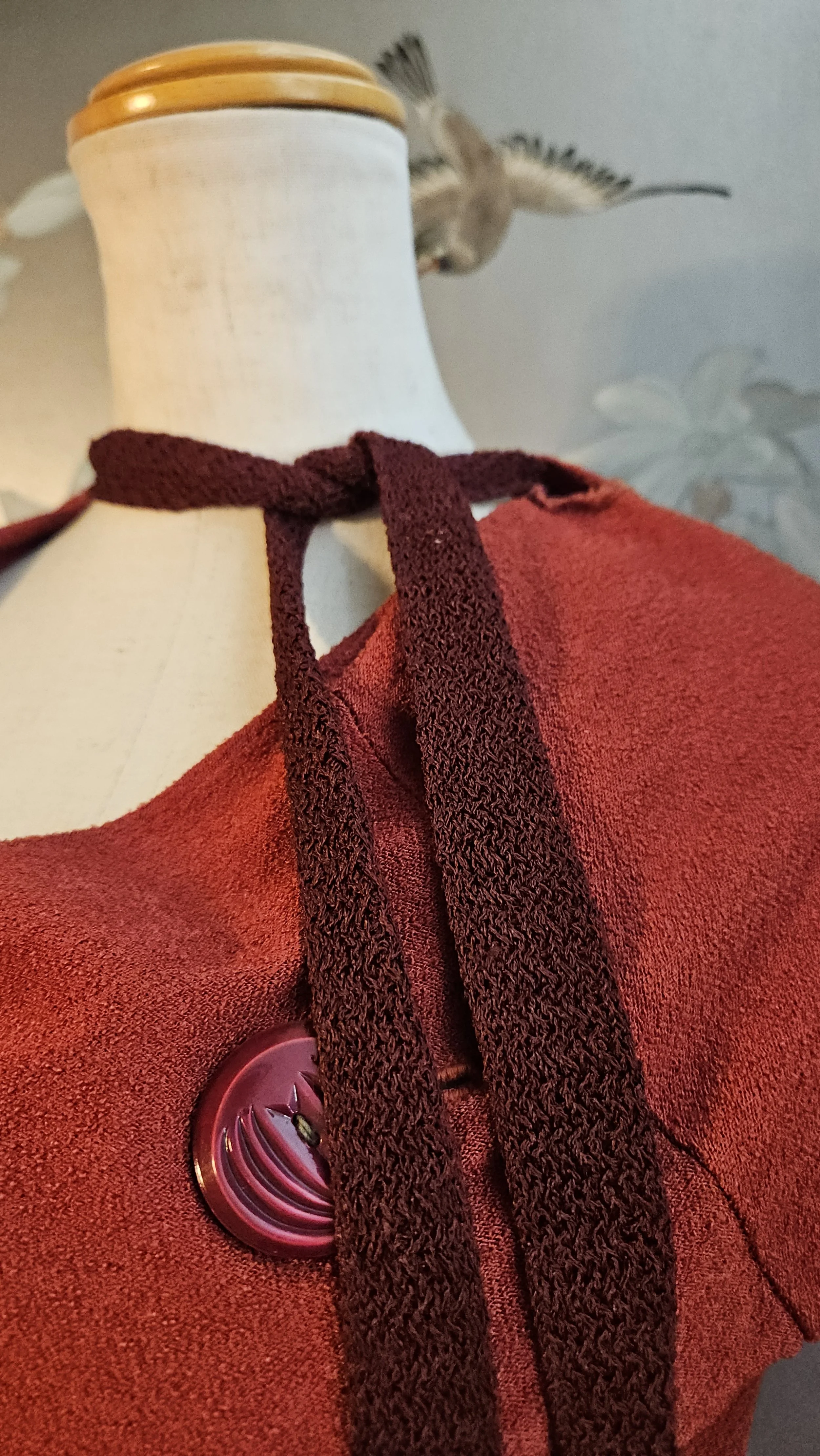 Image 6 of 7
Image 6 of 7

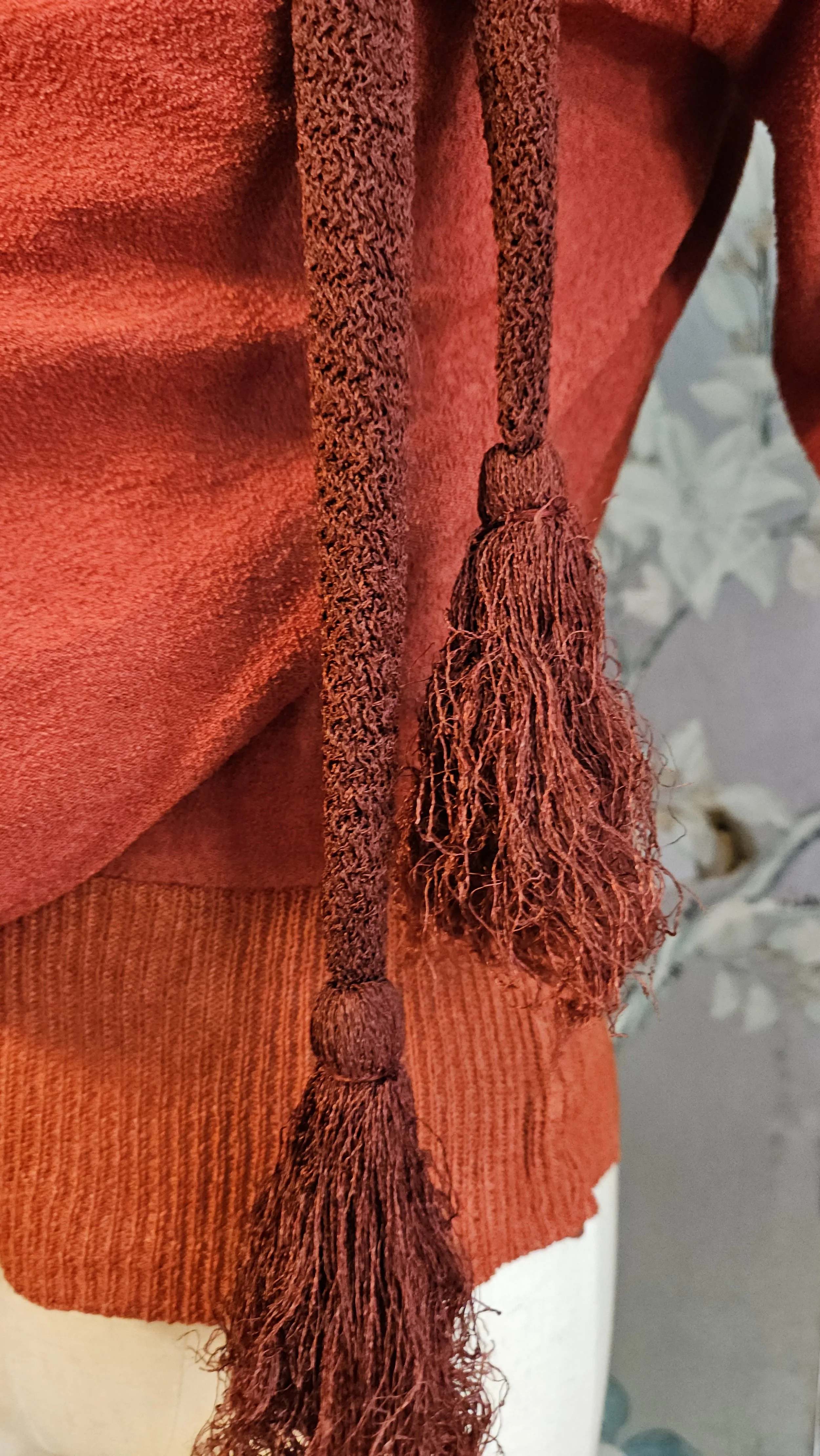 Image 7 of 7
Image 7 of 7








Burnt Sienna Knit Sweater Top with Celluloid Buttons and Tassels (c. 1920s-30s)
A striking example of 1920s fashion, this authentic vintage knit blouse captures the spirit of the Jazz Age with bold design and effortless elegance. Made from soft, rust-hued knit with a textured hand, the silhouette features distinctive Deco lines and a charming asymmetrical front flap adorned with large celluloid buttons. A deep wine-colored knit tie with original tassels drapes from the neckline—a playful nod to the era’s penchant for unexpected detail.
This piece would have likely been worn casually or for sporting occasions, yet today it carries a chic, almost avant-garde appeal. It’s rare to find 1920s knitwear in such wearable condition, making this both a collector’s gem and a statement garment for the modern wardrobe.
Features:
Authentic 1920s knit construction
Rust-red body with contrasting burgundy knit tie
Original tasseled necktie attached at collar
Dramatic Deco-inspired front flap
Two large celluloid buttons with spiral design
Cropped ribbed waistband and cuffs
Garment Measurements:
Bust (measured flat, from pit to pit): 36 inches
Waist (measured flat, from side to side): 26.5-27 inches
Sleeve length: 11.5 inches
Length (shoulder to hem): 20.5 inches
Fit: S
Notes:
Excellent vintage condition and ready to wear
This garment has limited stretch to its knit
A Short History of 1920s Knitwear:
The 1920s marked a revolutionary era in fashion—and knitwear played a vital role in that shift. As women embraced more active lifestyles and looser silhouettes, knit fabrics emerged as a stylish and practical alternative to the rigid tailoring of previous decades. Designers like Coco Chanel popularized jersey knits for everyday wear, bringing sportswear sensibilities into the mainstream. Machine-knitting advancements made knitwear more accessible, while artistic influences like Art Deco encouraged bold shapes, asymmetry, and creative detailing. Knit tops, sweaters, and even dresses were now fashion-forward garments rather than purely utilitarian. They reflected the new woman of the Jazz Age—modern, mobile, and unapologetically independent.
A striking example of 1920s fashion, this authentic vintage knit blouse captures the spirit of the Jazz Age with bold design and effortless elegance. Made from soft, rust-hued knit with a textured hand, the silhouette features distinctive Deco lines and a charming asymmetrical front flap adorned with large celluloid buttons. A deep wine-colored knit tie with original tassels drapes from the neckline—a playful nod to the era’s penchant for unexpected detail.
This piece would have likely been worn casually or for sporting occasions, yet today it carries a chic, almost avant-garde appeal. It’s rare to find 1920s knitwear in such wearable condition, making this both a collector’s gem and a statement garment for the modern wardrobe.
Features:
Authentic 1920s knit construction
Rust-red body with contrasting burgundy knit tie
Original tasseled necktie attached at collar
Dramatic Deco-inspired front flap
Two large celluloid buttons with spiral design
Cropped ribbed waistband and cuffs
Garment Measurements:
Bust (measured flat, from pit to pit): 36 inches
Waist (measured flat, from side to side): 26.5-27 inches
Sleeve length: 11.5 inches
Length (shoulder to hem): 20.5 inches
Fit: S
Notes:
Excellent vintage condition and ready to wear
This garment has limited stretch to its knit
A Short History of 1920s Knitwear:
The 1920s marked a revolutionary era in fashion—and knitwear played a vital role in that shift. As women embraced more active lifestyles and looser silhouettes, knit fabrics emerged as a stylish and practical alternative to the rigid tailoring of previous decades. Designers like Coco Chanel popularized jersey knits for everyday wear, bringing sportswear sensibilities into the mainstream. Machine-knitting advancements made knitwear more accessible, while artistic influences like Art Deco encouraged bold shapes, asymmetry, and creative detailing. Knit tops, sweaters, and even dresses were now fashion-forward garments rather than purely utilitarian. They reflected the new woman of the Jazz Age—modern, mobile, and unapologetically independent.